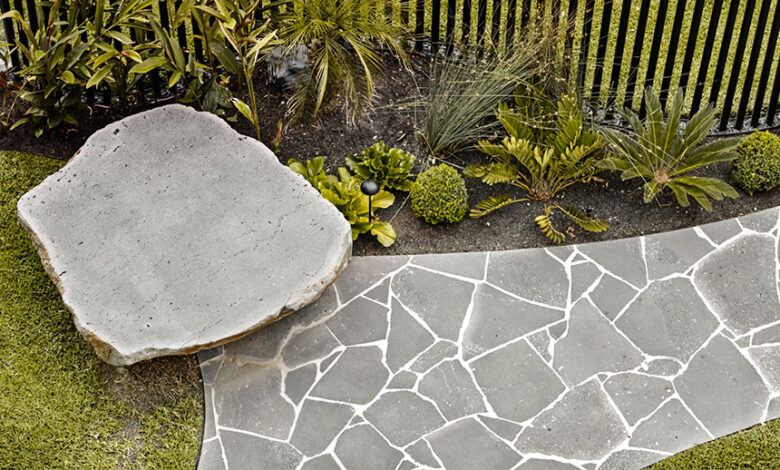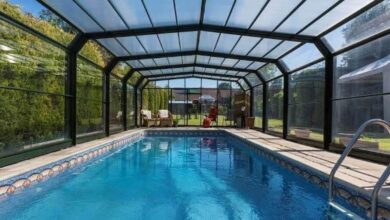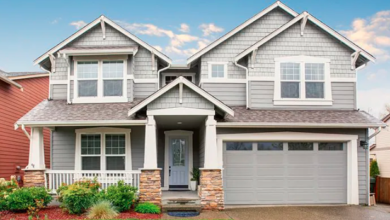Bluestone Pavers: The Perfect Choice for Your Outdoor Space

When it comes to enhancing the beauty and durability of outdoor spaces, bluestone pavers are a top choice for many homeowners and landscapers. Their natural appeal, versatility, and resilience make them ideal for patios, walkways, driveways, and pool decks. If you’re considering using bluestone pavers for your project, this guide will provide you with valuable insights into their features, types, installation process, and maintenance tips.
In this article, we’ll explore everything you need to know about bluestone pavers, helping you make an informed decision.
What Are Bluestone Pavers?
Bluestone pavers are natural stone slabs made from a form of sandstone or limestone, predominantly blue-grey in color, although they can come in a range of shades. They are quarried from specific regions, primarily in Australia, the U.S., and parts of Europe. Their durable, non-slip surface makes them popular for outdoor applications like patios, pathways, pool decks, and garden edging.
Key Features of Bluestone Pavers
- Durability: Bluestone is a dense and hard stone, making it resistant to cracks and breaks. It can withstand heavy foot traffic and the elements.
- Non-Slip Surface: With its naturally textured surface, bluestone offers excellent grip, even when wet, making it perfect for pool areas and walkways.
- Versatility: Bluestone comes in various shapes, sizes, and finishes, allowing for creative designs. It can be used in both contemporary and traditional landscapes.
- Color Variations: While the dominant color is blue-grey, bluestone can also feature earthy tones like brown, tan, and rust, depending on the source.
Types of Bluestone Pavers
Bluestone pavers come in two main types, each suitable for different applications:
- Natural Cleft Bluestone
Natural cleft bluestone has a rough, textured surface that occurs naturally when the stone is split along its layers. This type offers a rustic look and is commonly used for outdoor patios and pathways. Its non-uniform texture gives it a natural, organic appearance. - Thermal Bluestone
Thermal bluestone is treated with heat to create a smooth, uniform surface. This finish provides a sleek and polished look, making it ideal for modern settings. Thermal bluestone is typically used around pool decks and driveways where a refined look is desired.
Choosing the Right Bluestone Pavers for Your Project
When selecting bluestone pavers for your project, consider the following factors:
- Location and Usage: Think about where the pavers will be installed. For pool areas and pathways, non-slip natural cleft bluestone is recommended, while thermal bluestone suits driveways and patios.
- Size and Shape: Bluestone pavers come in different sizes and shapes, including rectangular, square, and irregular flagstone forms. Choose the size that complements your space and design preferences.
- Color: If you’re looking for a uniform appearance, opt for bluestone pavers with similar color tones. However, if you prefer a more natural and varied look, you can mix pavers with different hues.
How to Install Bluestone Pavers
Installing bluestone pavers requires careful planning and execution to ensure a durable and attractive result. Here’s a step-by-step guide to help you through the process:
Step 1: Prepare the Area
Begin by marking the area where the bluestone pavers will be installed. Clear the space of any debris, plants, or old pavement. Ensure that the ground is level, as this will provide a solid foundation for the pavers.
Step 2: Excavate and Compact the Soil
Excavate the soil to a depth of about 6 to 8 inches, depending on the thickness of the pavers and the type of traffic the area will experience. Once the soil is removed, use a plate compactor to compact the soil and create a stable base.
Step 3: Add a Layer of Gravel
Spread a 4-inch layer of crushed gravel over the compacted soil. This base layer helps with drainage and provides a solid foundation for the pavers. Use a level to ensure the gravel is even across the entire surface.
Step 4: Lay a Sand Layer
Next, add a 1- to 2-inch layer of sand over the gravel. The sand acts as a cushion for the bluestone pavers, allowing them to settle evenly. Use a rake to spread the sand and a level to check that the surface is smooth and flat.
Step 5: Install the Bluestone Pavers
Begin laying the bluestone pavers from one corner of the area, working your way outward. Ensure each paver is level by tapping it gently with a rubber mallet. Leave small gaps (about 1/8 to 1/4 inch) between the pavers to allow for natural expansion and contraction. If you’re using irregular bluestone, fit the pieces together like a puzzle for a seamless look.
Step 6: Fill the Joints
Once the pavers are laid, fill the gaps between them with polymeric sand or mortar. Polymeric sand is ideal for areas that require flexibility, like pathways, as it hardens to keep the pavers in place while still allowing movement. If you prefer a more solid finish, use mortar for a firmer bond.
Step 7: Compact the Surface
Finally, use the plate compactor to compress the pavers and sand. This step ensures that the pavers are securely set and level with each other. After compacting, spray the area with water to activate the polymeric sand and let it harden.
Maintenance Tips for Bluestone Pavers
To maintain the beauty and longevity of your bluestone pavers, follow these simple maintenance steps:
- Regular Cleaning
Sweep your bluestone pavers regularly to remove dirt, leaves, and debris. For deeper cleaning, use a mild soap and water solution. Avoid using harsh chemicals that can damage the stone’s surface. - Sealing the Pavers
While bluestone is naturally durable, applying a sealer can help protect it from stains and weathering. Sealing also enhances the stone’s color and texture. Depending on your environment, you may need to reseal the pavers every 1-3 years. - Repairing Damage
Over time, some pavers may crack or become uneven due to shifting soil or heavy traffic. Replace damaged pavers promptly to maintain the integrity of your outdoor space. If pavers become loose, remove the surrounding sand or mortar and reset them with fresh materials. - Winter Care
In colder climates, avoid using rock salt or harsh de-icing chemicals on bluestone surfaces, as they can cause damage. Instead, use sand or a stone-safe de-icer to prevent slipping during icy conditions.
Why Choose Bluestone Pavers?
There are many reasons why bluestone pavers are a popular choice for outdoor spaces:
- Aesthetic Appeal: Bluestone offers a timeless, elegant look that can complement various design styles, from traditional to contemporary.
- Durability: With proper installation and maintenance, bluestone pavers can last for decades, even in harsh weather conditions.
- Eco-Friendly: As a natural material, bluestone is an environmentally friendly option for outdoor landscaping.
Whether you’re looking to upgrade your patio, add a stunning walkway, or create a safe pool deck, bluestone pavers provide both functionality and beauty.
Conclusion
Bluestone pavers are an excellent choice for homeowners and designers seeking a durable, stylish, and versatile material for outdoor spaces. With their natural beauty, slip-resistant texture, and resilience, they can transform your garden, patio, or pool area into a stunning outdoor living space.
By following the proper installation steps and maintaining your bluestone pavers regularly, you can ensure they remain in top condition for years to come.




